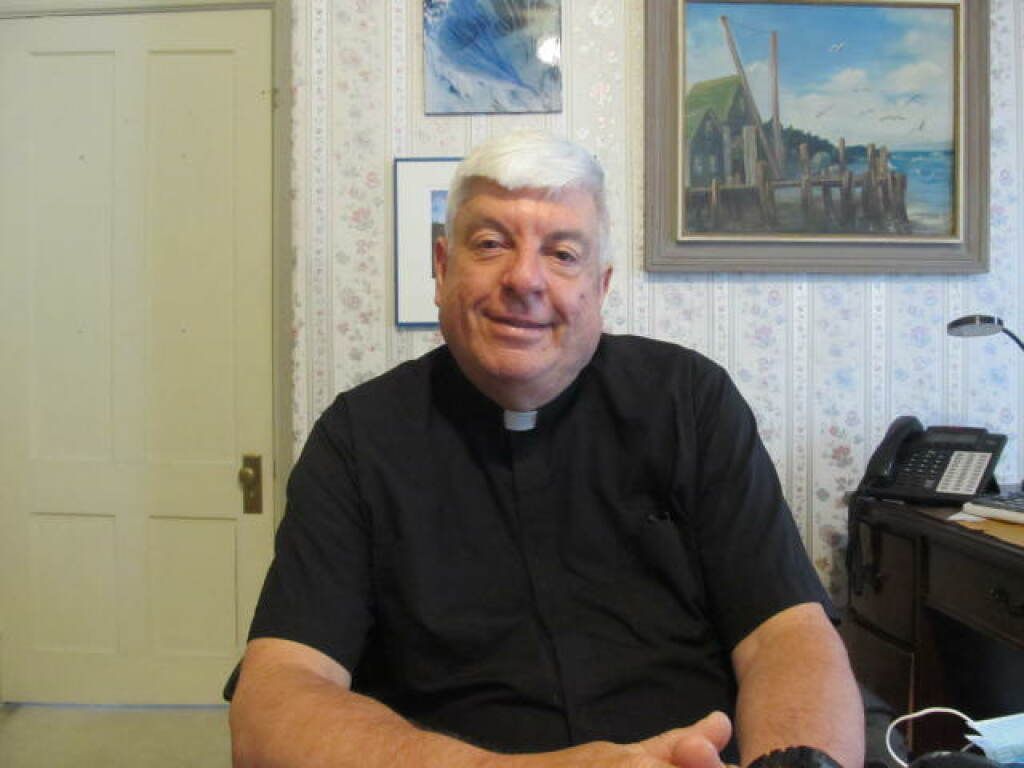 Resurrection is real!
Resurrection is real!
Many years ago I went on a tour of beautiful Gothic cathedrals in France. At one of the churches a guide shared a story I never forgot…Back in the Middle Ages a visitor to the area went to the construction site. He asked one of the workers what he was doing. “Why, can’t you see?” the worker asked. “I’m using these tools to cut the boulders to exactly the right size of stone blocks according to the architect’s specifications. It’s back-breaking work, I’ve been at it all day in the hot sun, and it’s pretty boring.” The visitor then asked another worker what he was doing. The worker replied that he was cutting pieces of colored glass so that they could then be fitted together and held in place by molten lead to become a stained glass window. Finally, the visitor spoke to an elderly woman, who was sweeping in a particular area, gathering up the day’s debris. He asked her what she was doing. She pointed to the building and replied, “I’m building a cathedral!” While the first two were focused on their narrow little world, the sweeper woman had taken up what she was doing into a larger, more complete and satisfying perspective.
Our gospel reading today centers on the resurrection of the dead. We are introduced to a group called the Sadducees. They were a priestly class who worked at the Temple. In their view, only the books of Scripture attributed to Moses (the first five books of our Bible) were authoritative. In those five books, they claimed, there is nothing about resurrection, so they don’t believe in it. In today’s passage they spin a rather strange and complicated story to try to refute the idea of resurrection.
Jesus’ response to them is incisive because it comes precisely from one of the five books the Sadducees accepted, the passage about the encounter of Moses with God at the burning bush. There, God identifies himself as the God of the ancient patriarchs, Abraham, Isaac and Jacob. Jesus notes that, since God is the God of the living, the patriarchs are alive and with God forever.
A short time later at the first Easter, resurrection actually takes place when Jesus rises from the dead. The first believers, those who encountered the risen Lord, were so convinced of resurrection that they could not be silenced. “Jesus is risen,” was their simple, but forceful proclamation. Even when threatened with torture and death, their witness continued to spread. Their lives took on new meaning because they had a new, broader perspective. Like the sweeping woman, who had the big picture of building a cathedral, the first believers knew who they were because of Jesus’ resurrection.
With their belief in resurrection, burdens somehow became lighter. The drudgery of the day was taken up into a promise of something bigger and better. The death of loved ones, as crushing as that experience was, became part of a new hope of seeing those loved ones again in eternity. Their outlook was changed and they could now see themselves as partners of Jesus, striving to build a better world, working for justice and peace, reaching out to the poor, including those who were feeling left out. They became part of a great adventure, bringing hope and a vision of new possibilities. Like the woman building a cathedral, they came to realize that they were building a Church, not of stone, bricks and mortar, but of people—people with dignity, loved by God, and destined for life beyond the grave. For them resurrection was real. Resurrection had a name, was a person: Jesus Christ. Because he had died for them, they now began to live for him, to become like him, and to build a Church, and a world transformed by people who know resurrection is possible. Resurrection is real.
You might also like
Father's Homilies




